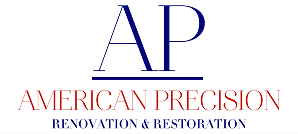Hiring the wrong painters can transform what should be an exciting home improvement project into a costly disappointment. Many homeowners make preventable mistakes during the contractor selection process that lead to poor quality work, project delays, budget overruns, and legal complications. Understanding common hiring mistakes helps homeowners make informed decisions that result in beautiful, professional paint jobs that meet expectations and protect their investments.
The painter selection process involves more than simply finding the lowest bid. Professional painters bring skills, experience, and business practices that justify their pricing while providing results that amateur work cannot match. Recognizing the difference between professional painters and less qualified alternatives prevents costly mistakes while ensuring project success.
Price-Based Decision Making
The biggest mistake homeowners make involves selecting painters based solely on price rather than considering value, quality, and professionalism. While budget considerations matter, extremely low bids often indicate corners will be cut, inferior materials will be used, or additional charges will be added later.
Unrealistically low estimates usually signal problems with contractor qualifications or business practices. Quality painting requires time, skill, and proper materials that cost money. Bids significantly below market rates suggest painters who either don’t understand project requirements or plan to cut corners during execution.
Hidden cost surprises often accompany low initial bids when painters discover “unexpected” conditions that require additional charges. Professional painters inspect properties thoroughly before bidding and include likely contingencies in their initial proposals.
Material quality differences explain significant pricing variations between contractors. Professional painters use premium paints, primers, and supplies that cost more but provide better coverage, durability, and appearance. Cheap materials save money initially but require more frequent repainting.
Labor cost variations reflect differences in painter skill levels, experience, and efficiency. Experienced painters work faster and achieve better results than novices, making their higher hourly rates more economical through superior productivity and quality.
Insurance and licensing costs are factored into professional painter pricing but absent from unlicensed alternatives. These costs protect homeowners from liability while ensuring painters meet professional standards and carry appropriate coverage.
Inadequate Contractor Research
Many homeowners fail to research painter backgrounds thoroughly, leading to hiring decisions based on incomplete or inaccurate information. Proper research prevents most hiring mistakes while identifying qualified professionals who deliver quality results.
Reference checking gets skipped by homeowners eager to start projects quickly. Speaking with previous customers provides valuable insights into painter work quality, reliability, communication skills, and professionalism. Professional painters provide references gladly and encourage prospective customers to contact them.
License verification often gets overlooked despite its importance for legal protection and quality assurance. Unlicensed painters cannot obtain permits for work requiring approvals and leave homeowners liable for injuries or code violations that occur during projects.
Insurance confirmation protects homeowners from liability claims but frequently gets ignored during contractor evaluation. Always verify current insurance certificates directly with insurance companies rather than accepting photocopied documents that could be outdated or fraudulent.
Better Business Bureau ratings and complaint histories provide valuable information about contractor business practices and customer satisfaction records. Research these resources before making hiring decisions to identify patterns of complaints or consistently positive feedback.
Online review evaluation requires careful analysis because fake reviews and biased opinions can distort actual contractor performance records. Look for detailed reviews that describe specific project experiences rather than generic praise or complaints.
Poor Contract Documentation
Inadequate contracts create opportunities for misunderstandings, disputes, and legal complications that professional contracts prevent. Many homeowners accept verbal agreements or incomplete written contracts that provide insufficient protection for both parties.
Verbal agreements cannot be enforced legally and provide no documentation of project scope, pricing, or timeline commitments. Professional painters provide comprehensive written contracts that specify all project details and protect both contractor and customer interests.
Incomplete work scope descriptions lead to disputes over what work is included in project pricing. Professional contracts describe all work phases, preparation requirements, material specifications, and cleanup responsibilities to prevent misunderstandings.
Payment schedule problems arise when contracts don’t specify payment timing and amounts. Reputable painters typically request minimal down payments with progress payments tied to work completion milestones. Large upfront payments or cash-only requests indicate potential problems with contractor reliability or business practices.
Timeline expectations need clear documentation to prevent disputes over project duration and completion dates. Professional contracts include start dates, milestone schedules, and completion commitments while accounting for weather delays and other factors beyond contractor control.
Change order procedures should be established upfront to handle modifications or additions that arise during projects. Professional contracts specify how changes will be documented, priced, and approved to prevent disputes over additional work requests.
Warranty terms protect homeowners after project completion but often get omitted from amateur contracts. Professional painters offer warranties on both materials and workmanship that provide recourse if problems develop after project completion.
Ignoring Preparation Requirements
Surface preparation determines paint job longevity and appearance more than any other factor, yet many homeowners underestimate its importance when evaluating painter proposals. Contractors who skip preparation steps deliver inferior results that fail prematurely.
Power washing requirements vary based on surface conditions but are frequently minimized in low-cost proposals. Professional painters assess cleaning needs accurately and include appropriate cleaning methods in their proposals and pricing.
Scraping and sanding needs depend on existing paint condition and surface preparation requirements. Contractors who minimize preparation work to reduce costs often deliver paint jobs that peel or fail within months of completion.
Caulking and repair work addresses gaps, holes, and surface defects that affect both appearance and paint performance. Professional painters identify repair needs during initial inspections and include necessary work in their comprehensive proposals.
Priming requirements depend on surface conditions, existing paint types, and topcoat selections. Contractors who skip primer applications to save money compromise paint adhesion and performance while creating conditions for premature failure.
Protection measures for landscaping, windows, and adjacent surfaces separate professional painters from amateurs. Quality painters invest time in proper masking and protection that prevents damage and cleanup problems.
Seasonal Timing Mistakes
Weather conditions significantly affect paint application and curing, yet many homeowners schedule projects without considering seasonal factors that impact results. Poor timing decisions can compromise paint performance and extend project timelines.
Temperature extremes prevent proper paint application and curing. Most paints require temperatures between 50-85 degrees Fahrenheit for optimal application and curing. Scheduling projects during extreme weather often leads to poor results or project delays.
Humidity levels affect paint drying and curing processes. High humidity slows drying times and can cause application problems, while very low humidity can cause paint to dry too quickly and leave brush marks or poor flow characteristics.
Rain forecasts require careful consideration because wet weather prevents exterior painting and can damage fresh paint applications. Professional painters monitor weather forecasts carefully and schedule work to avoid rain exposure during critical curing periods.
Seasonal demand affects painter availability and pricing. Spring and summer represent peak painting seasons when quality painters book quickly and pricing reaches annual highs. Planning projects during off-peak periods often provides better availability and pricing.
Sun exposure during application can cause paint to dry too quickly and leave visible lap marks or brush marks. Professional painters schedule work to avoid painting in direct sunlight during hot weather.
Communication & Expectation Issues
Clear communication between homeowners and painters prevents most project problems while ensuring expectations are met. Many hiring mistakes stem from poor communication during the selection and contracting process.
Color selection decisions often get rushed without proper consideration of lighting conditions, existing furnishings, and personal preferences. Professional painters provide color consultation services and samples that help homeowners make informed decisions they’ll be satisfied with long-term.
Surface condition discussions help homeowners understand preparation requirements and associated costs. Professional painters explain surface conditions and necessary preparation work during initial consultations to prevent surprises during project execution.
Timeline expectations need realistic assessment based on project scope, weather conditions, and painter availability. Professional painters provide accurate timeline estimates while explaining factors that could affect schedule completion.
Quality standards should be discussed and agreed upon before work begins to prevent disputes over acceptable results. Professional painters explain their quality standards and show examples of their work to ensure expectations align with deliverable results.
Cleanup responsibilities need clarification to prevent disputes over project site conditions after work completion. Professional painters specify cleanup procedures and responsibilities in their contracts to prevent misunderstandings.
Permit & Legal Compliance Oversights
Many painting projects require permits and must comply with local regulations, yet homeowners often overlook these requirements when hiring painters. Non-compliance can create legal problems and safety hazards that professional painters help avoid.
Building permit requirements vary by location and project scope but may be required for exterior painting of historical properties or projects involving structural repairs. Professional painters understand local requirements and handle permit applications when necessary.
HOA approval processes need consideration in communities with homeowner associations that regulate exterior color choices and modification procedures. Professional painters familiar with local communities understand these requirements and can assist with approval processes.
Lead paint regulations affect homes built before 1978 and require special handling procedures during preparation and disposal. Professional painters certified in lead-safe work practices ensure compliance with federal regulations that protect family health.
Environmental regulations govern paint disposal, solvent handling, and cleanup procedures. Professional painters follow proper disposal methods and environmental protection procedures that amateur painters often ignore.
Safety compliance includes proper ladder usage, fall protection, and hazardous material handling. Professional painters carry insurance and follow safety procedures that protect both workers and homeowners from accidents and liability claims.
Quality Control & Final Inspection
Many homeowners fail to inspect work properly before making final payments, missing opportunities to address problems while painters are still on site. Proper quality control ensures work meets expectations before projects are considered complete.
Touch-up requirements should be addressed before final payment and project completion. Professional painters conduct final walk-throughs with homeowners to identify any areas needing attention before considering projects complete.
Coverage consistency needs evaluation under different lighting conditions to ensure even application and color matching. Professional painters guarantee consistent coverage and address any areas that don’t meet their quality standards.
Clean-up completion includes removing protective materials, cleaning tools and equipment, and restoring landscaping and exterior surfaces to pre-project conditions. Professional painters include thorough cleanup in their service offerings.
Warranty documentation should be provided at project completion with clear terms for addressing any problems that develop during warranty periods. Professional painters provide written warranties that protect homeowner investments.
Final payment should only be made after satisfactory project completion and quality inspection. Professional painters expect final approval before requesting final payment and stand behind their work with appropriate warranties.
Avoiding common hiring mistakes requires thorough research, clear communication, and realistic expectations about professional painting services. Take time to evaluate painters carefully, document agreements thoroughly, and maintain involvement throughout project execution. Professional painters welcome homeowner involvement and provide quality work that justifies their pricing while delivering results that enhance home beauty and value for years to come.

